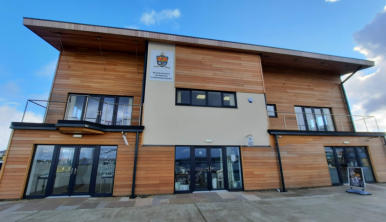amble & northumberland
We are proud to be
Gold Award
Northumberland Tourism Ambassadors!

WARKWORTH HARBOUR
The River Coquet did not originally follow its present course. In 1765 heavy
rain and sleet caused it to change course to enter the sea further south at
Amble. Originally a small fishing port, Amble (or Warkworth) Harbour grew in
the nineteenth century due to its nearness to the Northumberland
coalfields. A railway linked the harbour to the collieries which made it ideal
for the transportation and export of coal. Therefore Amble owes its
existence to the construction of its harbour from 1838 to 1849. Officially
called Warkworth Harbour, Amble then became Northumberland's most
northern coal port in 1835 when the first staithes were built and the need
for a harbour became evident.
Radcliffe, Broomhill, Shilbottle, Widdrington, Whittle, Togston and Hauxley
collieries were the main suppliers of coal which the railways brought to the
staithes at the Broomhill and Radcliffe quays. brought to the staithes at the
Broomhill and Radcliffe quays. Amble thrived and coal shipments for
domestic and for export, peaked in about 1930.
After the Second World War the war pits began to close and coal shipments
gradually dwindled. Added to the fact that larger ships were unable to use
the harbour eventually the coal shipments ceased. The end came for the
staithes in 1969 and they were demolished in 1971, however it is still
possible to trace the path the railway used to take.

Traditional Northumbrian fishing vessels known as cobles
have taken shelter in Amble’s natural harbour for centuries
and in 1988 a new fish dock was opened for the three seine
netters and approximately 20 cobles still working. As a
result of this a fishing fleet still works out of Amble.
Warkworth Harbour still has two main quays - Broomhill
Quay is the busy main quay where the fishing boats are
moored whereas the Radcliffe Quay, beyond the fishdock,
is much quieter. Funded by English Partnerships, Amble
Pier and Breakwater was completely refurbished and the
work was completed early in 2000.

The Breakwater and Pier were officially re-opened by Jack
Charlton on 21 May 2000. Unfortunately a part of the harbour
wall on the Broomhill Quay suffered a partial collapsed in the
late summer of 2008 due to massive flooding which left many
areas of Northumberland badly damaged. It has just
reopened after repairs in August 2013.
Amble has also long been a popular holiday resort and the
fairly recent renewal of its south pier and breakwater in 2000
added to the appeal of Warkworth Harbour to visitors. There
is also a north pier and a breakwater linking the south pier to
the shore.

The piers were built using stone quarried locally but this proved unsuitable and Scotttish granite replaced it
when the piers were rebuilt. A temporary bridge was built across the harbour near the brick works to transport
materials for the north pier which was extended in 1890. The imposing white Cliff House still stands guard above
the breakwater next to the former quarry which is now filled in. Warkworth harbour has seen many foreign
visitors, including German, Swedish, Danish and Dutch vessels in its lifetime - including a German ship seeking
shelter from the storm during the Tall Ships Race from Newcastle in 2005.

The Harbour hosts a weekly Sunday market which is very popular with locals and visitors alike and there is a Car
Boot Sale held every Saturday morning.
Today Warkworth Harbour is operated by the
Warkworth Harbour Commissioners. They have
recently moved into a purpose-built new office
(above) located on the Quayside (along with a
number of retail outlets).
The old Harbour Master’s office (pictured right),
located on Harbour Rd has been repurposed and
also houses a number of small businesses .







































